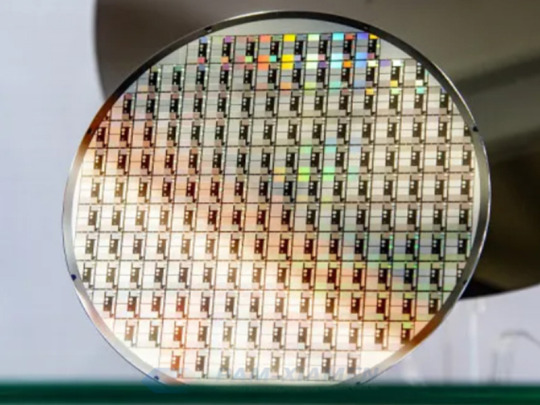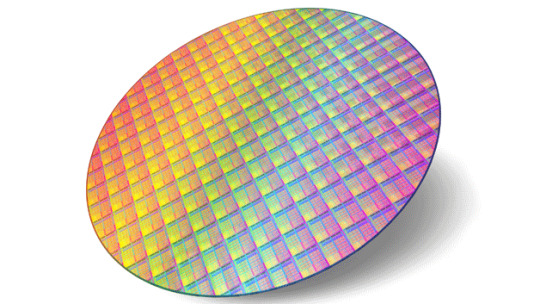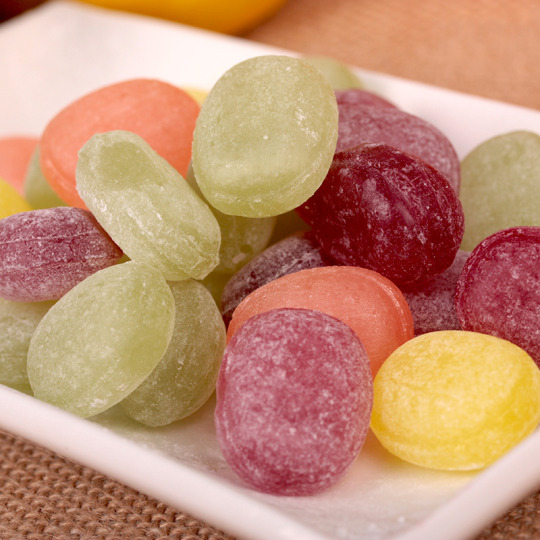#epi wafer
Text
0 notes
Text
0 notes
Text
Global Silicon EPI Wafer Market Analysis Report 2022-2028: Lucrative Opportunities Emerge with the Continuous ... - GlobeNewswire
Global Silicon EPI Wafer Market Analysis Report 2022-2028: Lucrative Opportunities Emerge with the Continuous ... GlobeNewswire http://dlvr.it/SscTsY
0 notes
Text
0 notes
Text
Renesas signs 10-year wafer supply agreement with Wolfspeed

【Lansheng Technology Information】: On July 5th, Renesas Electronics and Wolfspeed, Inc, a global leader in silicon carbide technology, announced the execution of a wafer supply agreement. Renesas paid a deposit of US$2 billion to ensure a 10-year SiC bare and epi wafer supply commitments.
The high-quality silicon carbide wafers provided by Wolfspeed will pave the way for Renesas to expand the production of silicon carbide power semiconductors starting in 2025.
The ten-year supply agreement, which calls for Wolfspeed to supply Renesas with 150mm silicon carbide bare and epitaxial wafers in 2025, reinforces both companies' vision for a transition from silicon to silicon carbide semiconductor power devices.
The agreement also envisages the supply of 200mm silicon carbide bare and epitaxial wafers to Renesas following the full operation of the recently announced John Palmour silicon carbide fabrication center.
Demand for more efficient power semiconductors is increasing dramatically due to the growth of electric vehicles and renewable energy. Renesas is rapidly responding to the growing demand for power semiconductors by expanding its in-house manufacturing capabilities.
Silicon carbide devices enable higher energy efficiency, greater power density and lower system cost compared to traditional silicon power semiconductors.
In an increasingly energy-conscious world, the adoption of SiC is growing in multiple high-volume applications spanning electric vehicles, renewable energy and energy storage, charging infrastructure, industrial power supplies, traction and variable speed drives universal.
Lansheng Technology Limited, which is a spot stock distributor of many well-known brands, we have price advantage of the first-hand spot channel, and have technical supports.
Our main brands: STMicroelectronics, Toshiba, Microchip, Vishay, Marvell, ON Semiconductor, AOS, DIODES, Murata, Samsung, Hyundai/Hynix, Xilinx, Micron, Infinone, Texas Instruments, ADI, Maxim Integrated, NXP, etc
To learn more about our products, services, and capabilities, please visit our website at http://www.lanshengic.com
0 notes
Text

Silicon EPI wafer is an exotic semiconducting material. It is combined with epitaxial growth that is a deposition of a crystalline layer over a crystalline-based semiconductor substrate, called silicon EPI wafer. These wafers are used as a high purity layer and for the formation of thick dopes. An epitaxial wafer is used for photonics, microelectronics, spintronics, or photovoltaics in various application such as smart phones, LED, gyroscope, laptops, tablets, gaming consoles, and others.
0 notes
Text
0 notes
Text
Know About The Advantages of Epitaxy
The word is derived from the Greek epi meaning above, and taxis meaning in an ordered manner. In the forming of layers, it involves the deposition of silicon or silicon compounds that help to continue and perfect the crystal structure of the bare silicon wafer below. The electrical characteristics of the Epi wafer surface are improved by epitaxy, which makes it suitable for highly complex microprocessors and memory devices. Selective Epitaxy is an Epitaxy process that on certain predetermined areas of the wafer only deposits silicon or a silicon compound.

Events Occurring During Epitaxy
To form the transistor channel region, as well as the source and drain, there is the selective deposition of Epitaxial layers. The source is the point where charge carriers like electrons enter the channel, and they leave from the drain. There is a gate between them that controls the conductivity of the channel. It can be even switched to allow electrons to flow or to prevent them from flowing. Epi wafer manufacturer can dope Epitaxy films to very precise concentrations of the dopant elements by combining them with additional elements in the processing source gases.
Advantages
In a highly controlled manner Epitaxy improves the electrical characteristics of the wafer surface, making it very much suitable for highly complex microprocessors and memory devices.
In the current scenario, we see that in the microelectronics industry CMOS technology is the driving technology, and the conventional way of fabricating integrated circuits on bulk silicon substrates has given problems such as the difficulty of making shallow junctions, unwanted parasitic effects, and latch-up. In recent years, in many aspects to their bulk counterparts, the advent of Silicon-on-Insulator has proven superior. The advantages here are the absence of latch-up, ability to operate at high temperature, the ease of making shallow junctions, radiation hardness, the reduced parasitic source and drain capacitance's, improved trans conductance, and sharper sub-threshold slope.

In creating SOI wafers there are several approaches available and here we discuss two particular techniques. First, through the Ultra-Thin Silicon process where high-quality Silicon-on-Sapphire (SOS) material is formed we seek to illustrate a heterosexuality technique. Next, to grow a homogeneous crystal laterally on an insulator Epi wafer supplier look at a homosexuality technique called Epitaxial Lateral Overgrowth (ELO) technique which seeks.
Original source: https://ganwafer.wordpress.com/
9 notes
·
View notes
Text
Epi Wafer Market Worldwide Prospects, Share, Crucial Players, Size & Forecast – 2027
Epi Wafer Market Worldwide Prospects, Share, Crucial Players, Size & Forecast – 2027
Chinese Manufacturers Diversify Business Streams amidst COVID-19 Era and U.S. Trade War
Diversifying supply chains has become one of the key strategies for reviving the global economy. The COVID-19 pandemic has had only a minor impact on the semiconductor industry, with more than 50% of the companies in the Epi wafer market expected to meet their manufacturing output goals. However, common…

View On WordPress
0 notes
Link
Cleaving silicon wafers technique. We can help you cleave any wafer.
#silicon wafers#Cleaving 111 Silicon Wafers#Epitaxial Silicon Wafers#Silicon Epi Wafers Sale#P Type Silicon#P-Type Silicon Substrates#N Type Silicon
1 note
·
View note
Text
0 notes
Text
North America Silicon EPI Wafer Market Report 2023: Continuous ... - GlobeNewswire
North America Silicon EPI Wafer Market Report 2023: Continuous ... GlobeNewswire http://dlvr.it/SjttcX
0 notes
Text
Video Game Cooking: Sugars (Sekiro: Shadows Die Twice)


Sekiro: Shadows Die Twice is a standalone historical fantasy made by the famous people who also created Dark Souls and Bloodborne. It became an instant hit, and garnered massive critical acclaim. You control the broody shinobi Wolf as he battles entire armies and legendary beasts.
One of the many consumables in-game are the Sugars; Gokan’s Sugar, Ako’s Sugar, Yashariku’s Sugar, Ungo’s Sugar, and Gachiin’s Sugar. These candies are named and colored differently, and each offer a different effect. One raises your attack power, another makes you more stealthy, and so on.
Today, we’re gonna be re-creating these Sugars with our own recipe. And true to my tradition when it comes to Video Game Recipes, we’re gonna be taking our ingredients accurate to the setting. Which in this case is Sengoku period Japan. This recipe meta draws especially true to my own heritage, as a Taiwanese person.
Sekiro Senpou Temple Sugars: Recipe (makes 10-20 individual candies, depending on the size)
Base candy recipe:
3 3/4 cups granulated raw cane sugar
1 1/2 cups golden syrup/brown rice syrup
1 cup water
Corn starch for mold making (optional)
Confectioner’s sugar for dusting
Flavorings:
Fresh ginger slices (Gokan’s Sugar)
Dried lotus seeds (Gokan’s Sugar)
Red cherries (Ako’s Sugar)
Dried Astragalus (Ako’s Sugar)
Ginseng (Ungo’s Sugar)
White peaches (Ungo’s Sugar)
Sake (Yashariku’s Sugar)
Dried Cocklebur fruit (Yashariku’s Sugar)
Dried Orange peel (Gachiin’s Sugar)
Dried Goji berries (Gachiin’s Sugar)
Food coloring

(Sekiro won the 2019 Game Of The Year award, the first FromSoftware game to do so.)
To make our Sugars, we’ll be infusing a traditional candy base with various ingredients, unique for each candy. Every ingredient is based off of TCM, which is an acronym standing for Traditional Chinese Medicine. For those unacquainted with TCM, it can be hard to explain its influence. There’s no true western equivalent because it’s more than just ‘old household remedies’, it’s almost a given that Asian citizens take various TCM practices seriously to a degree. Like westerners do with honey lemon tea, or chicken noodle soup.
It’s also accurate to the game. Sekiro takes its setting very seriously. Everything from weapons, to hairstyles, to interior decor, even down to the kanji on Emma’s note in the beginning of the game is true to the Sengoku period, and some levels even go backwards a bit to the Heinan period, to reflect an ancient atmosphere. You can reasonably minus the historical inaccuracies on your own volition; giant snake gods, lightning powers, and automatic prosthetic grappling hooks weren’t indigenous to Japan.
Except there’s in fact one tiny detail that you might be surprised to learn is actually anachronistic; disk-shaped hard candies. The Sugars.
Hard candies aren’t traditional East-Asian treats. Sugar was always readily available in the form of sugar cane, true, but sweets almost always took the form of fruit, and candy-coated/infused ingredients. This is true worldwide until refining sugar into its white form became common, but East-Asia in particular wasn’t munching on lozenges while Marie Antoinette already had cough drops.
The Sengoku period stretched from the early Renaissance to the Baroque period. While Wolf was parrying his way through the Ashina Outskirts, the first King James Bible was published. There was plate armor and court jesters, but also firearms and photographs. Japan didn’t get access to matchlock firearms until 1542, and since the Sunken Valley clan seems to define themselves by the expert use of these guns, it makes sense that the intro to the game itself dates Sekiro as specifically taking place in the latter years of the Sengoku period.
All throughout this stretch of two centuries, Japan has been under constant war and political strife, lending to the Sengoku period’s alternative name, the ‘Warring States Period’. Japan consisted of separate nations, all led under Daimyo and warlords and various nobles that demanded their armies scramble for more land and resources. Living under this kind of conflict for so long means that innovations and education are rare. There’s no opportunity to invent the telescope when you’re all constantly worried about your lives.
This means that the food of Sekiro would have very much been the same it’s been since centuries beforehand. Even though by this point, the Columbian Exchange has been well underway and Europe was experimenting with tomatoes in their food, Japan wasn’t enjoying this same golden period. Any developments would have been weaponry, not candy making methods.
This means that, for our recipe, we’re not using anything that a Senpou monk wouldn’t have access to. No potatoes, corn, vanilla, etc. No beet sugar, or fruits that aren’t native to Japan. Even the raw cane sugar we’re using is pushing the authenticity envelope, because the ‘raw’ granulated sugar you find in grocery stores aren’t completely raw, they’ve still been refined using lye and carbon to strip much of the molasses. True raw cane sugar, when boiled down from its juice form, makes a traditional Asian ingredient called black sugar, which is very dark in color and not suited for making the brightly-colored candy disks that the Sugars appear to be.

(Shinobi aren’t samurai, but Wolf’s relationship with Kuro is so clearly samurai-ish that we can assume Wolf was being paid buckets as a high-prestige warrior. He also would have access to better food, including white rice; which, while already genetically modified through breeding by the Sengoku period, wouldn’t have looked like modern rice. Or maybe Wolf wasn’t enjoying the high life, because he dresses in rags compared to Genichiro and apparently didn’t know rice was supposed to be cooked.)
Knowing all that history about the Sengoku period, it’s almost silly to see candy consumables in-game, looking like they came right out of a bag of Werther’s Originals. The developers of Sekiro made many lengths to ensure everything was authentic, so why are the candies so modern-looking when they could instead have been a traditional Sengoku period sweet like something mochi-based, or agar (seaweed) jellies?
The lore behind the Sugars are that the evil Senpou monks were mass-producing these candies, and selling them all across Ashina to fund their crooked child experiments. They’re not just (presumably) tasty, they offer benefits to your health. That’s definitely in line with TCM culture, and gives us some inspiration for how to pursue replicating them.
One important note; the Sugars are some of the lesser consumables Wolf can use. Almost all other consumables are better, offering more powerful effects for a longer duration. So what if these candies were true to TCM and were mere treats infused with medicinal ingredients, only capable of giving you a small boost? Especially in comparison to the Divine Child’s rice, which would be like an Epi-Pen in this analogy.
But there’s even more depth to the consumables than that. Kuro gifts Wolf a ‘sweet rice ball’ at some point, which is almost certainly an Ohagi bun; made out of glutinous rice, red beans, and sugar, and its a traditional offering for the Buddhist observance of seasonal equinox. Eating it is sometimes said to bring protection. In order for Kuro to make Wolf this rice ball, you gotta give him some of that special rice from the Divine Child. Wolf offhandedly mentions that her rice is “sweet when you bite into it”, and Kuro realizes that Wolf has been eating these rice grains raw all this time, like the feral 5′5 goblin he is. Kuro vows to give his loyal protector something nice to eat, for once, and makes him three Ohagi dumplings.
The food of Sekiro is symbolic. The Divine Child is able to make rice out of thin air, like a deity of fertility. Kuro takes this divine rice, and his sweet rice ball is more powerful than the magical blessed Sugars because it was made with compassion. And eating Kuro’s lovingly-made rice ball reminds Wolf of once being fed a rice ball when he was young and starving, given to him by his assfuck of a father who’s compassion is heavily in question.
The Sugars are described as giving the eater a ‘benediction’ of power, and who knows what the translators were thinking, but the word choice reminds us of communion, and the flesh and blood of Christ. It’s not a true comparison; communion is about replicating and worshiping the Last Supper, reminding Christians about Jesus willingly dying cause humans are sinful. Consuming the ‘flesh and blood’ of Jesus in the form of bread and wine is very different than eating a candy apparently blessed by an ancient Japanese warrior. It’s not like communion wafers are supposed to empower you, or protect you.
Looking at the in-game image of each Sugar, you can see the likeness of a person behind it, likely the very warrior the Sugar is named after. We don’t know if these people actually had a hand in these Sugars, somehow transplanting their power into each individual candy, or if the monks just named the candies after them. Either way, the process of receiving the benefits of the Sugars isn’t just about crunching it between your teeth, Wolf also takes a moment to strike a‘warrior stances’, which, according to the descriptions, is a required detail to properly absorb the candy’s effects. Each Sugar has their own corresponding ‘stance’ that Wolf performs. It’s a weird detail, and raises even more questions about the Sugars, the monks, and the warriors behind the candy.

(Observant players will note that the five Headless boss enemies drop ‘spiritfalls’, each of which share names with the five Sugars, and offer upgraded versions of their corresponding Sugar; Ako’s Spiritfall is basically a better version of Ako’s Sugar, and so on. We can assume that the Headless are, in fact, the very same legendary warriors that powered the Sugars, especially since the game itself states that the Headless are undead remains of powerful individuals.)
True to FromSoftware tradition, details are included with purpose. And also at the same time, some details are just meant to be taken at face value. The various centipede-themed enemies in Sekiro are associated with kegare - spiritual defilement, death - explaining visually their willing abandonment from Buddhism. But there’s likely no lore explaining why Wolf can automatically hoover up all nearby enemy loot like a vacuum with the press of a button.
The inexplicable details of FromSoftware games are almost certainly because of gameplay convenience. Many characters are 9-10 feet tall for no reason, towering over Wolf, who’s already short to begin with. Lore-wise, it doesn’t make sense for so many completely human characters to be so gratuitously large. Gameplay-wise, it’s a lot easier to observe an enemy’s telegraphed movesets if their model is scaled up. Helpful, in a game like Sekiro.
The ‘stances’ of the Sugars might fall into both these categories. They exist for both gameplay and story reasons. The developers wanted a lag between consuming these powerups and being free to fight, so the player is forced to time these powerups carefully. You need to avoid enemies taking a free hit while Wolf’s animations are occupied. Then they storified this gameplay-based lag into a lore-based reason. Wolf has to take a ‘stance’ when eating these candies to receive its powers. For some reason.
I wasn’t able to further research the ‘stances’ Wolf strikes. Maybe they’re based off of known martial arts. But the description also offers some additional insight; according to the game, these Sugars contain ‘excess karma’ that is apparently the source of their power. Now, Buddhist karma doesn’t run in ‘excess’, a better choice of word would be ‘transfiguration’. One person can experience another’s karma through a variety of means.
“Bite the candy and take the Yashariku stance to impart its inhuman benediction.” In accordance with Buddhist folklore, these warriors are dead and imitating them can impart their previous life’s karma unto you. Our recipe won’t have magical karma powers, but we can certainly infuse our candies with medicinal herbs. You can just imagine the Senpou monks stirring up a big pot of sugar solution, and throwing in handfuls of dried Goji berries.

(This isn’t the first FromSoftware game that draws heavily from Buddhism. Dark Souls’ stagnant world of undeath is a rejection of Buddhist rebirth, clinging onto your legacy in a bid for immortality. Bloodborne decided to further explore the ‘time and madness’ angle of the same concept, while Sekiro went in the opposite direction to expand the ‘death and karma’ side.)
To make our Sugars; begin by first boiling the 1 cup of water with the corresponding flavor ingredients. Essentially, we’re making a batch of 10-20 candies with one flavor at a time, to make things easier on us. Ako’s Sugar requires you boil sliced ginger and dried lotus seeds, and so on.
After the water has been properly infused with the medicinal ingredients, strain the water and add it to another pot with the rest of the candy base ingredients, then boiling it all down until it reaches 300f. It’ll take a while, and you’ll notice that there’s gonna be a point where it seems like the temperature isn’t rising again. But keep at it; all the water needs to be boiled away. But the flavor will remain.
Once it reaches 300f, add the food coloring, and then keep boiling again until it reaches 310f. Then immediately take it off the heat and pour it into molds. Disk-shaped candy molds do exist, but you can easily make your own by pouring a lot of corn starch into a pan, then pressing a disk-shaped object (like another candy) into the starch to make indents. When you pour the candy mixture into a corn starch mold, you can use a spoon to gently and accurately fill each hole without distorting the powder. After perhaps three hours, the candies should be completely set and cool, and you can tumble away the powder and store the candies. Any mold method is gonna give the candies a flat side, but a true disk candy requires factory-standard molds that we don’t have.
We’re not using natural food colorings, ‘cause I tried my best to research natural alternatives that could retain their dye after boilings. And it was super hard, especially blue. Take it from me that Sekiro’s Sugars shouldn’t have been so brightly colored; intensely colored food did exist, but it was with things like powdered dried beets and matcha and pepper powder. Boiling these ingredients (rather than mixing it with dough or jelly) will change the colors drastically, sometimes completely bleaching it, or changing red to purple and so on.
As for the various medicinal ingredients; I took a gander in my mom’s soup-making cabinet and took stock of the medicinal herbs we ourselves use in our lives. The ones included in this recipe are some of the more commonly used ingredients of modern TCM.
Gokan’s Sugar, as a posture-retaining consumable, is described as a popular choice amongst shinobi hunters, a job that requires “a body with an unshakable core”. Ginger and lotus seeds are great for restoring energy through chi, a person’s lifeforce.
Ako’s Sugar raises your attack power. This candy actually proved one of the hardest to find medicines for, since, you know, most medicine is about preserving your health. Astragalus root increases energy and resistance to stress, and red cherries are a warming food according to TCM; warming meaning that its a yang property that further enhances your energy levels. (Keep in mind that food warmness-coolness is more about keeping those two in balance for optical health.)
Ungo’s Sugar reduces the amount of health Wolf loses. Very protection-centric, so we’re using ginseng, for longevity, and white peach slices for their heavy association with divinity. Both of these ingredients have some of the most well-known history in Asian food culture.
Yashariku’s Sugar is a double-edged sword, since it reduces both your health and posture so Wolf can be super powerful for a little bit. So you’re gonna add sake to the candy mixture around the 300f mark, and the dried cocklebur fruit is an immunity-boosting medicine ... but the plant is mildly toxic and can cause diarrhea. You know, Wolf gets super powerful and aggressive when taking this candy cause he needs to shit his brains out. Don’t worry; we’ve got this in our own pantry, and it personally doesn’t make my mom’s stomach upset, but it does me so it must range from person to person.
Gachiin’s Sugar makes you more stealthy, which I took to translate into ‘quieting your thoughts and emotions’. Like when you hold a baby and it can feel your own inner turmoil and starts to cry? Orange peel and goji berries restore your chi, your vision, an irregular heart rate, and stress.
Enjoy your candies! Pop them before tough situations like speaking before a big crowd, or having to wait in line at the DMV, or when you have to fight the Headless Ape for the first time. Tell your friends to stay away from the Senpou brand, so you don’t support their unethical practices.

50 notes
·
View notes